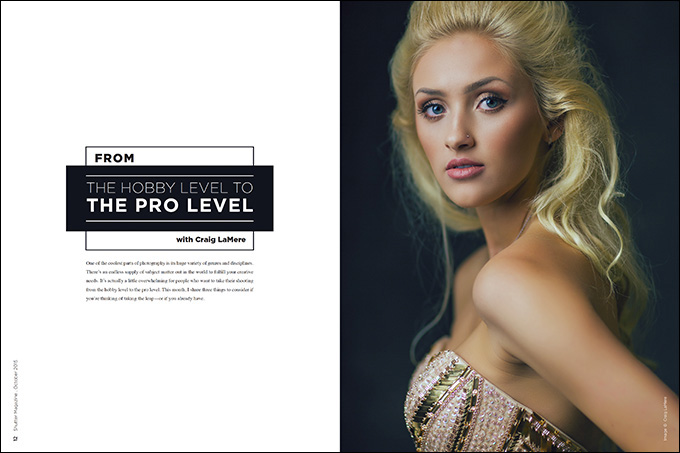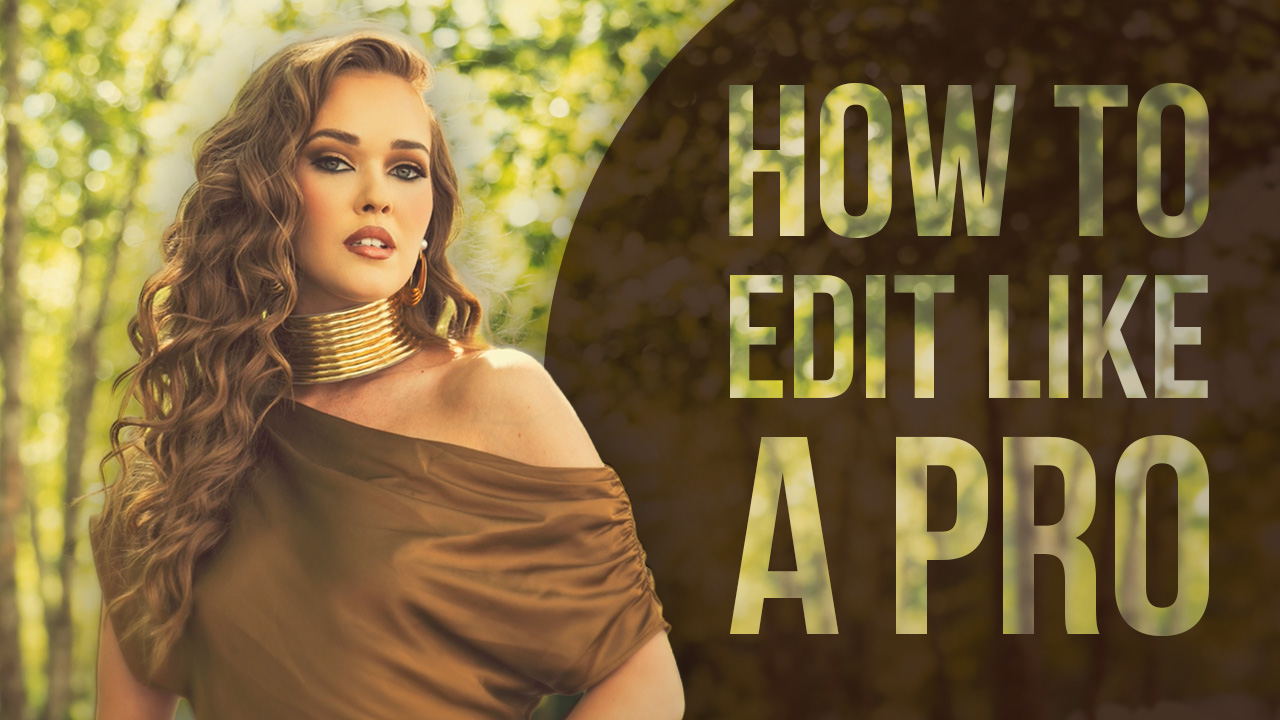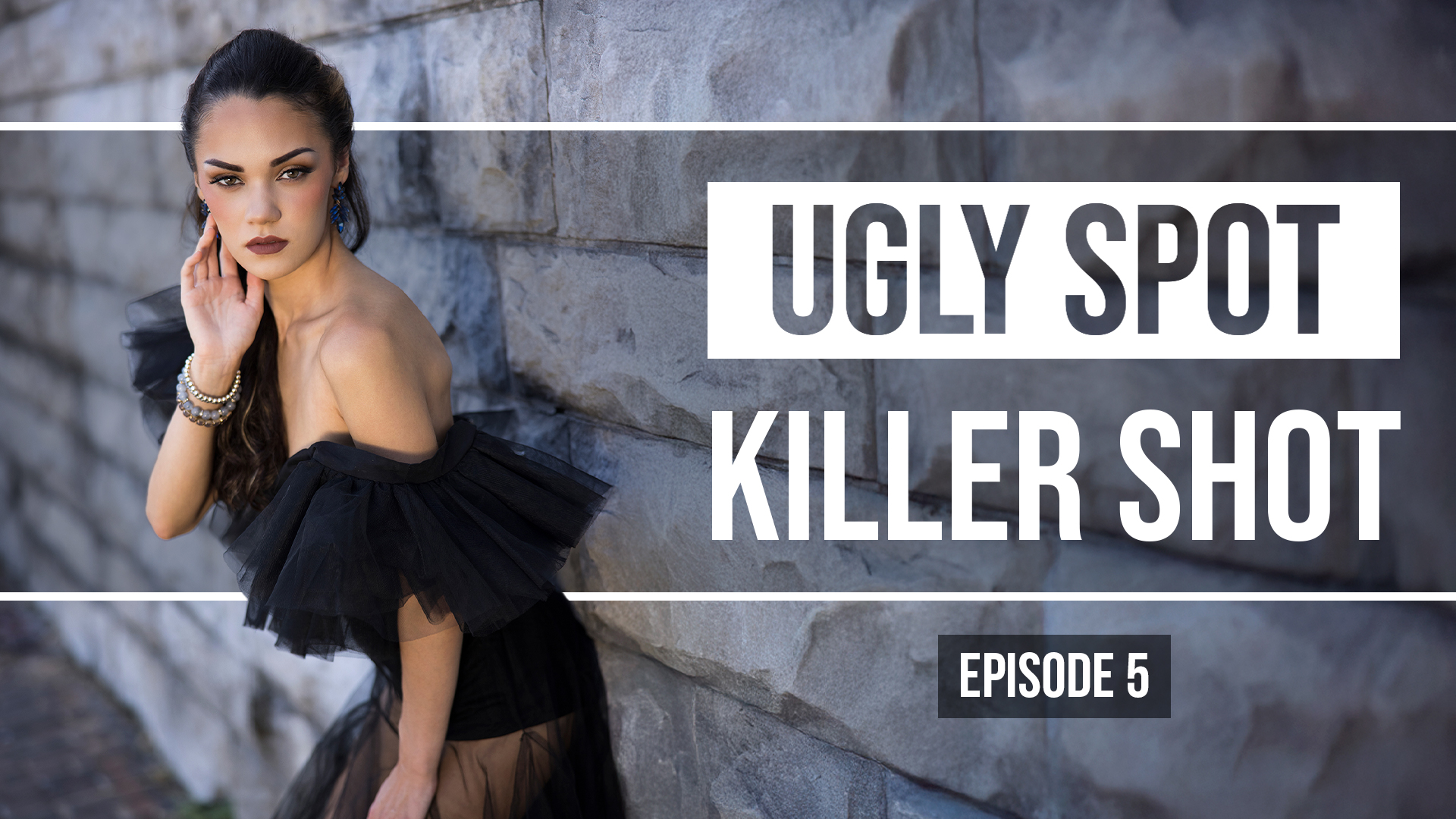From the Hobby Level to the Pro Level with Craig LaMere
One of the coolest parts of photography is its huge variety of genres and disciplines. There’s an endless supply of subject matter out in the world to fulfill your creative needs. It’s actually a little overwhelming for people who want to take their shooting from the hobby level to the pro level. This month, I share three things to consider if you’re thinking of taking the leap—or if you already have.
Never Too Late to Start
This coming January, I will have been shooting for six years. Before becoming a photographer, I had been a very unhappy commercial insurance agent for 10 years. I knew I wanted out of the business—it was the most unrewarding thing I had ever done. I had always been a creative person, and I was about as fulfilled doing insurance as a rocket scientist who only lights bottle rockets.
I needed a creative outlet from insurance. Because I had always liked photography, I decided a camera would be my outlet. So I went to Costco and bought a Canon Rebel kit that came with two lenses and a bag. And with that, at the age of 39, I began my incredibly amazing, badass photography journey.
I hear all the time from people who feel they are running out of time to make their mark or to really do well in our industry, and that just never rings true. Photography is one of the few industries that are age proof as long as you can produce sellable images. Some of the most respected shooters in the industry are well into their forties and beyond. Do not feel because you are a certain age that becoming a professional shooter is out of the realm of possibility. It’s like anything else: If you start a little late, you just have to work a little harder to catch up. It can be done. I can attest to it.
Find Your Subject as Fast as You Can
Since I had absolutely no formal training or knowledge, I put my new camera on the green “P” and I shot rocks. OK, I shot sagebrush, trees, and mountains as well. I didn’t have a clue about genres, so I just kept shooting what felt right at the time, hence the nature images. Then, after a while, I started shooting buildings and other things that had cool angles. I was happy with how things were going, but I knew neither subject really was totally for me. One day I got really brave and decided it was time to point my lens at a human. As soon as I started photographing people, I knew that was for me; I was totally bitten by the photography bug.
Portraiture was my genre. But I soon realized I did not have the skills set to shoot babies and kids. I couldn’t relate to them—or their parents. After shooting a few terrible sessions, I decided my time and energy were going to be better spent focusing on subjects I could do a good job with.
When you are a hobby shooter, you have the luxury of shooting anything and everything that strikes your fancy. When you make that move to shooting to pay your bills, the focus has to be much more precise because your recreation just became your occupation. Finding out what I was super bad at shooting was one of the best lessons I learned early on. It allowed me to excel at what I did well.
Choosing the Right Client for You
A lot of people think any and all business is good. Actually, any and all business can be the worst thing that can ever happen to you if it is the wrong client for you and your business. I know firsthand of the train wrecks that occur when you say yes to clients you know you should say no to.
Just like in regular life, you are drawn to certain kinds of people you want to spend time with. You’re not a good match with every client. Maybe your client is way more conservative than you. Maybe you’re too wild for them. Whatever the circumstances, trying to fit a square peg in a round hole can be the worst idea ever.
The Prebooking Consultation
The very best time to find out if a client is the right one for you is during the prebooking consultation. I have a few goals in mind with the consult. I go over locations and clothes, show them my product lines and, most importantly, find out if we are a good match.
When I meet my prospective clients, I wear what I typically wear on shoots, which means very casual—unless we are meeting about a wedding (believe it or not, I do wear long pants to shoot weddings). I’m dressed in my official Moz uniform, which is flip-flops, shorts and a Moz t-shirt—which means my prospective clients get to see both of my tattoo-covered arms.
Turning Away Clients?!
Nine out of 10 of my consults go just fine, and we book and have the best time ever. But there is that rare 10 percent where I feel I will not be able to deliver what prospective clients are expecting, or I feel they are going to be far too demanding than I want to deal with, and I decide not to take them on. So I don’t. When I turn clients down, I thank them for the opportunity to meet with them, then tell them I do not feel I can provide what they need. Because of the investment they’re making, I want to make sure they get what they want. I offer to refer them to other shooters who might be a better fit.
The consult is not a one-way street, by any means. There are also those times afterward when I hear, “We will get back with you.” Which means I just got fired.
The jump from hobby shooter to professional shooter can be a scary one. I knew it was for me when I decided I was going to be a professional portrait artist. I hope these tips help smooth your transition and give you some good food for thought as you start your professional journey.




